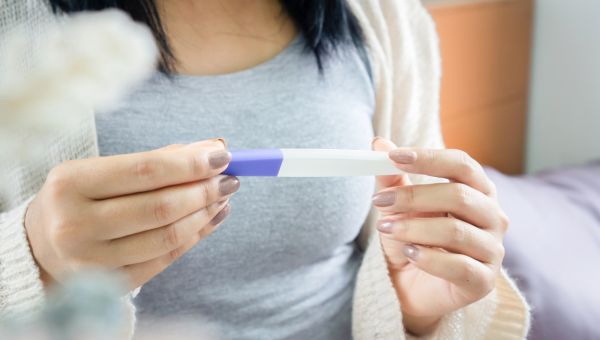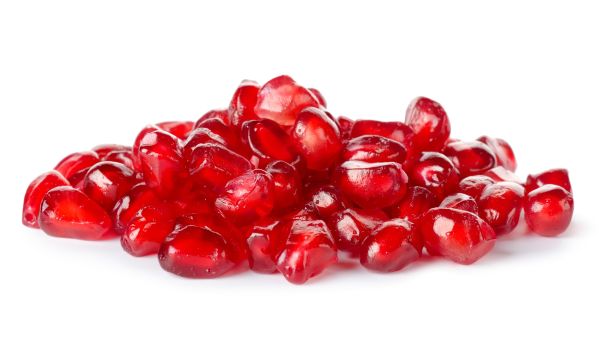Healthy pregnancy: your first trimester guide
Understand the key milestones of prenatal development, as well as the aches, weight gain, morning sickness, and other changes you may experience along the way.
Updated on March 19, 2024

The First Trimester
During pregnancy, many changes are happening to your body. There may also be new words to learn.
When tracking your pregnancy, it helps to understand the term “gestational age.” This is the term used to describe the progress of a pregnancy. Week 1 of gestational age starts from the first day of your last menstrual cycle, before you are actually pregnant and when your body is preparing for pregnancy.
We’ve compiled essential information about the key milestones of the first trimester (the first three months of pregnancy), as well as what you may experience, including morning sickness to the first movements of the fetus.
It’s important to know that if you have a high-risk pregnancy—whether because you are older than 35, have a history of preeclampsia, or have conditions such as diabetes, obesity, or high blood pressure—you may need to see a maternal-fetal medicine (MFM) specialist in addition to your regular healthcare provider (HCP).

Fertilization to 5 weeks
During week 2, the ovary releases an egg into the fallopian tube, which carries the egg from the ovaries to the uterus. If you have unprotected intercourse, conception occurs if a sperm—traveling from the vagina through the cervix and uterus into the fallopian tube— reaches and enters the egg. The fertilized egg, called a zygote, travels down the fallopian tube and embeds in the wall of the uterus.
By week 5, the zygote has become an embryo, and a variety of important structures begin to develop. These include the brain, spinal cord, heart, and gastrointestinal tract, as well as blood, kidney, and nerve cells.
During this time, you may not even realize you’re pregnant. If you’re trying to conceive, “you should take a pregnancy test if you experience any changes in your period, no matter how subtle,” says Rabiya Suleman, OBGYN, MD, of Specialists in Women’s Care in Lansing, Kansas.

Size at 6 Weeks: Pomegranate Seed
Key developments: The embryo’s eyes and ears begin to form and tiny buds appear where arms and legs will develop. As the heart continues to grow, its beat follows a consistent rhythm.
What you need to know: Morning sickness, nausea, fatigue, and mood swings may all emerge. “Morning sickness can occur anytime, anywhere, from once or twice a day to 7 to 10 times a day,” says Dr. Suleman. Symptoms usually improve by the end of the first trimester.

Size at 7 Weeks: Small Blueberry
Key developments: The brain and spinal cord are developing quickly and eyelids are beginning to form. The arm buds are starting to flatten and look like tiny paddles.
What you need to know: Your uterus is about the size of a lemon this week, and you’re probably eating more. Note that some spotting of blood is to be expected during pregnancy—but more than a little may indicate a problem with the pregnancy.
“Brown blood is usually okay, but red blood may indicate active bleeding,” says Suleman. “Regardless of color, you’ll want to tell your HCP about any spotting to make sure that everything is okay.”

Size at 8 Weeks: Raspberry
Key developments: The lungs start to form. Meanwhile, the arms and legs are increasing in length and webbed fingers and toes are taking shape.
What you need to know: Morning sickness and hormonal changes may make you feel sluggish. “I encourage my patients to get as much rest as they can in the first trimester because your body is doing a lot of work on the inside that you cannot see on the outside,” says Suleman.

Size at 9 Weeks: Grape
Key developments: The major internal organs continue to grow, while bones begin to take shape. The heart’s four chambers have formed, and tooth buds are developing beneath the gums.
What you need to know: If you haven’t experienced mood swings yet, you may experience them now.
“The first prenatal visit should occur between seven and nine weeks,” notes Suleman. “You’ll have an exam, blood work, and counseling on what to expect during pregnancy.”

Size at 10 Weeks: Kumquat
Key developments: Facial features are materializing, including ears and nostrils, and the mouth has developed an upper lip and tiny teeth. The eyes, though half-closed, can react to light. The head—because of the rapidly growing brain—still appears out of proportion with the rest of the body. The heart rate is about three times that of an adult, at roughly 180 beats per minute.
What you need to know: Your HCP will check to find out if you’ve gotten or need to get certain important immunizations. They’ll also determine your blood type and Rh factor, which refers to whether your blood type is “positive” or “negative.”
“During your pregnancy, you’ll want to plan to be immunized for the flu during flu season and whooping cough (Tdap) during the third trimester,” says Suleman, so it’s not a bad idea to start preparing now. The American College of Obstetricians and Gynecologists (ACOG) also recommends that all pregnant people get a COVID vaccine.

Size at 11 Weeks: Fig
Key developments: The embryo is now called a fetus, as it will be up until birth. The fetus’ head now comprises roughly half the body’s size. The external genitals appear, though they are not yet visible on ultrasound scans. The liver begins to create red blood cells.
What you need to know: You may experience some discomfort from constipation and heartburn. “The sphincter [the muscle] between the stomach and the esophagus loosens during pregnancy, which can cause heartburn,” says Suleman. “You can reduce symptoms by eating small, frequent meals, taking walks after eating, and avoiding triggers like acidic or spicy foods.”

Size at 12 Weeks: Plum
Key developments: The fetus can wiggle its fingers—now adorned with fingernails—and curl them into a fist. The intestines, which had before extended out into the umbilical cord, are now enclosed within the abdomen.
What you need to know: You’ve probably started gaining weight by now. HCPs recommend that people at a healthy weight before pregnancy should gain around 25 to 35 pounds. Your nausea should be subsiding (finally), and you may not feel as sluggish anymore, says Suleman.

Size at 13 Weeks: Small Peach
Key developments: The fetus has begun to swallow the amniotic fluid that surrounds it, secreting it back out as urine. The skeleton, meanwhile, begins to harden, particularly in the skull and longer bones of the body.
What you need to know: Make sure you’re taking prenatal vitamins and eating about 340 more calories per day than usual to stay properly nourished. Your pregnancy may or may not be noticeable as a "bump" on your lower abdomen yet. “Some women won’t show until 20 to 25 weeks,” says Suleman. “That doesn’t mean your uterus isn’t growing appropriately.” Your HCP will measure your uterus to see if it’s the size it should be.

National Library of Medicine. MedlinePlus. Gestational age. Review date December 10, 2021.
National Library of Medicine. MedlinePlus. Fetal development. Review date July 13, 2021.
Mayo Clinic. Pregnancy week by week. High-risk pregnancy: Know what to expect. January 18, 2022.
Cleveland Clinic. Fetal Development: Stages of Growth. Last reviewed April 16, 2020.
Public Health England. Week-by-week guide to pregnancy. Accessed November 16, 2022.
Mayo Clinic. Pregnancy week by week. Fetal development: The 1st trimester. June 3, 2022.
American College of Obstetricians and Gynecologists. The Rh Factor: How It Can Affect Your Pregnancy. Last updated: June 2022.
American College of Obstetricians and Gynecologists. Maternal Immunization. Committee Opinion. Number 741. June 2018.
American College of Obstetricians and Gynecologists. ACOG and SMFM Recommend COVID-19 Vaccination for Pregnant Individuals. July 30, 2021.
BabyCenter. Pregnancy Week by Week. Accessed November 16, 2022.
Mayo Clinic. Pregnancy week by week. Fetal development: The 2nd trimester. June 3, 2022.
Parents. How Big Is My Baby This Week? Here’s a Baby Fruit Size Chart. Updated on May 17, 2022.
Centers for Disease Control and Prevention. Weight Gain During Pregnancy. Page last reviewed: June 13, 2022.
More On


video

article

slideshow


video


video
